Historical sites in India, India is a land filled with history, where every place tells stories of ancient civilizations, powerful empires, and cultural changes. If you love history, India is a great place to explore. From huge palaces to old temples, from buildings from the colonial era to cities that are hundreds of years old, here are ten places you must visit. These places will surely satisfy your curiosity about history.
- 1. Taj Mahal, Agra
- 2. Hampi, Karnataka
- 3. Red Fort, Delhi
- 4. Khajuraho Temples, Madhya Pradesh
- 5. Fatehpur Sikri, Uttar Pradesh
- 6. Jaisalmer Fort, Rajasthan
- 7. Ellora and Ajanta Caves, Maharashtra
- 8. Mysore Palace, Karnataka
- 9. Konark Sun Temple, Odisha
- 10. Varanasi, Uttar Pradesh
- Final Thoughts, historical sites in India
- FAQs
1. Taj Mahal, Agra
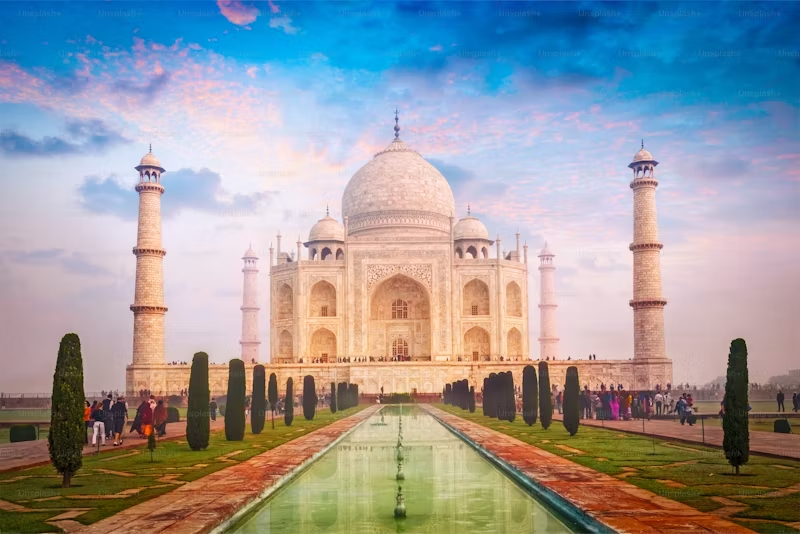
A trip to India wouldn’t be complete without seeing the famous Taj Mahal. This white marble tomb was built by Emperor Shah Jahan to honor his favorite wife, Mumtaz Mahal. It is a beautiful example of Mughal art and architecture. The Taj Mahal is not only a romantic symbol but also a masterpiece of Mughal design.
Tips: Go early in the morning or late in the evening to avoid the crowds and see the Taj Mahal lit by the beautiful light of sunrise or sunset.
2. Hampi, Karnataka
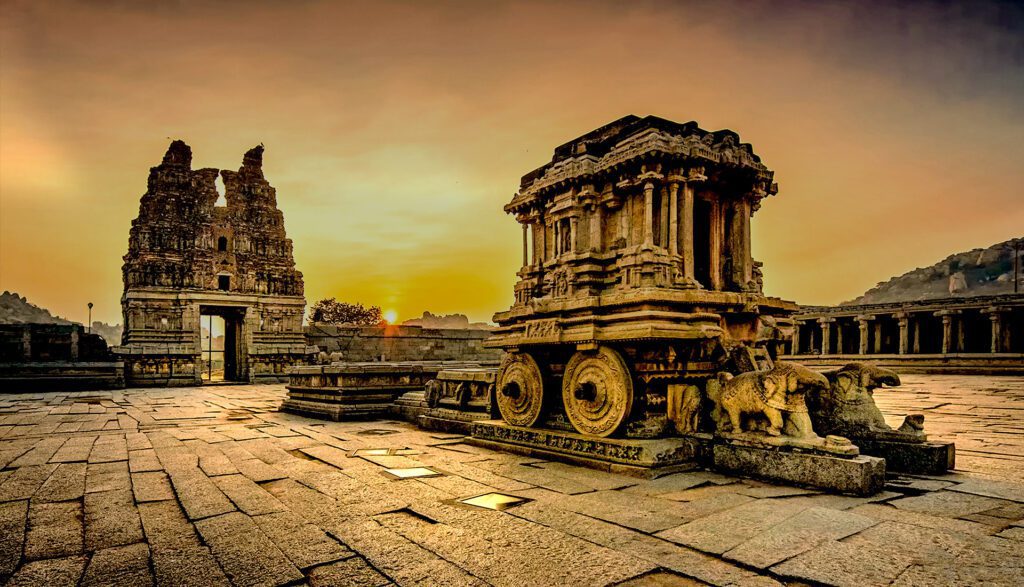
Hampi was once the capital of the Vijayanagara Empire. Now, it is a UNESCO World Heritage Site with many ruins, temples, and old markets. The big area, with its rocks and pieces of royal buildings, shows us one of the most powerful empires in South Indian history.
Tips: Don’t forget to visit the Vittala Temple, famous for its musical stone pillars and the Stone Chariot.
3. Red Fort, Delhi
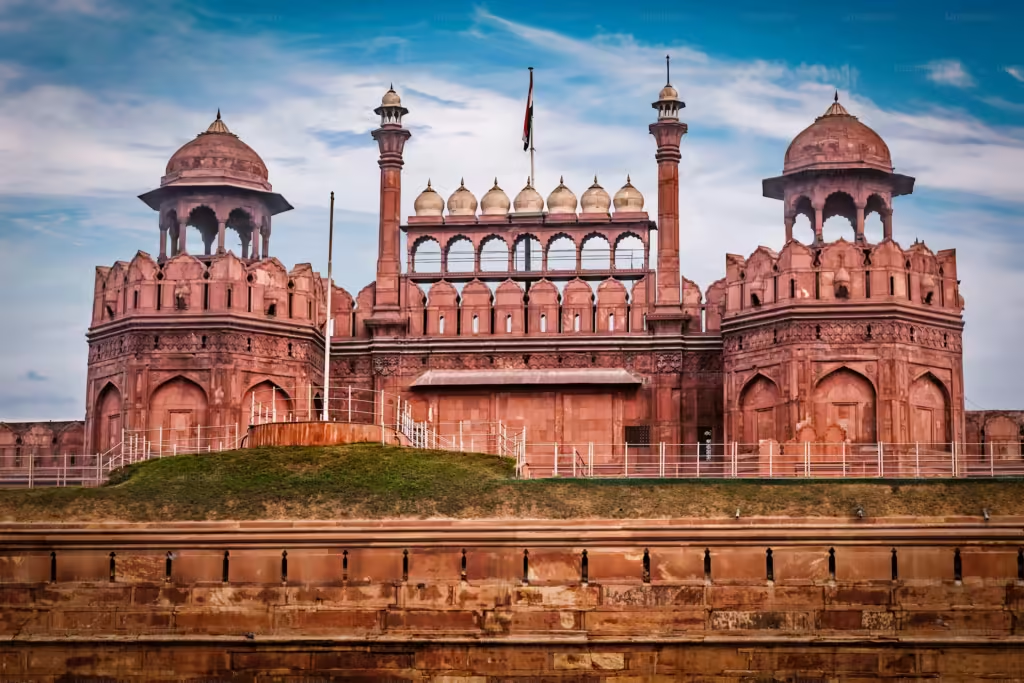
The Red Fort, which represents India’s freedom, was built by Emperor Shah Jahan in the 17th century. This big fort made of red sandstone was the main home of the Mughal emperors for more than 200 years. It’s a great place to see Mughal architecture and how it mixes Persian, Timurid, and Indian styles.
Tip: Stay until evening to watch the light and sound show. It tells the history of Delhi and the fort.
4. Khajuraho Temples, Madhya Pradesh
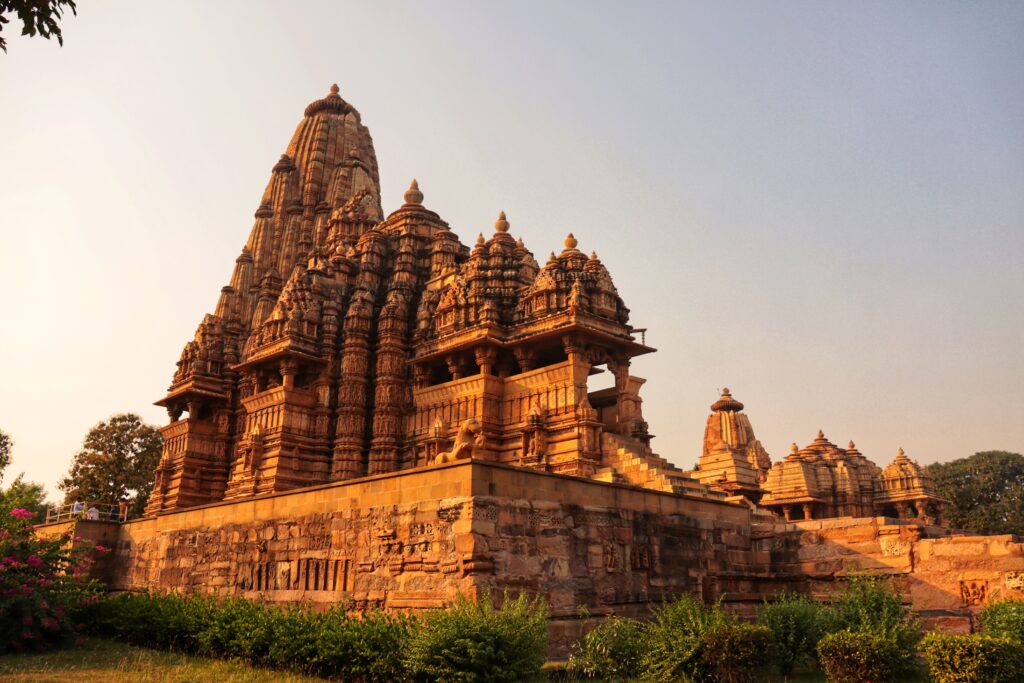
The Khajuraho temples are famous for their erotic sculptures. They celebrate life, love, and spirituality. These temples were built between 950 and 1050 AD by the Chandela dynasty. They show not only sensual things but also everyday life, war, and spirituality. This shows how amazing the ancient Indian artists were.
Tip: Go during the Khajuraho Dance Festival in February for a cultural experience.
5. Fatehpur Sikri, Uttar Pradesh
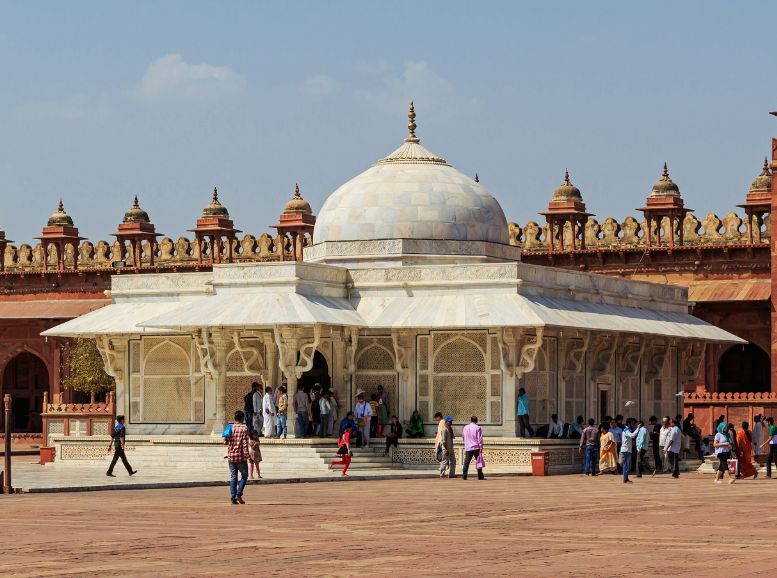
A short distance from Agra, Fatehpur Sikri was the capital of Emperor Akbar’s Mughal empire for a short time. This empty city, with its beautiful palaces, mosques, and courtyards, is still a great example of Mughal greatness and the emperor’s ideas about architecture.
Tip: Hire a guide to learn about the importance of each building in the city.
6. Jaisalmer Fort, Rajasthan
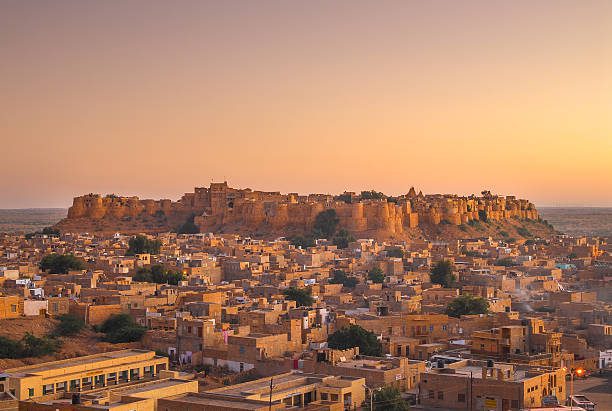
The Jaisalmer Fort rises from the golden sands of the Thar Desert. People still live inside its walls. It was built in 1156 AD by Rawal Jaisal, a Bhati Rajput ruler. This fort is a beautiful example of architecture and shows the rich history of Rajasthan. Explore the palaces, temples, and narrow streets that make this old fort feel alive.
Tip: The view of the desert from the top of the fort is amazing, especially at sunset.
7. Ellora and Ajanta Caves, Maharashtra
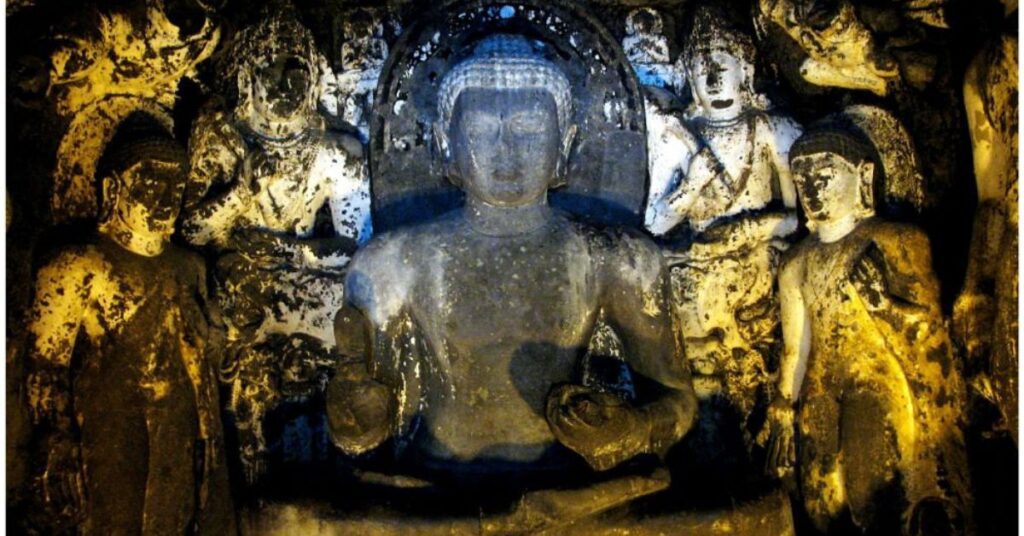
The rock-cut caves of Ellora and Ajanta are some of the most amazing examples of ancient Indian rock-cut architecture. Ajanta is known for its Buddhist murals and sculptures and dates back to the 2nd century BC. Ellora shows a mix of Hindu, Buddhist, and Jain temples carved between the 6th and 10th centuries.
Tip: Spend two days exploring both sites. Each one shows a different side of India’s religious and artistic history.
8. Mysore Palace, Karnataka
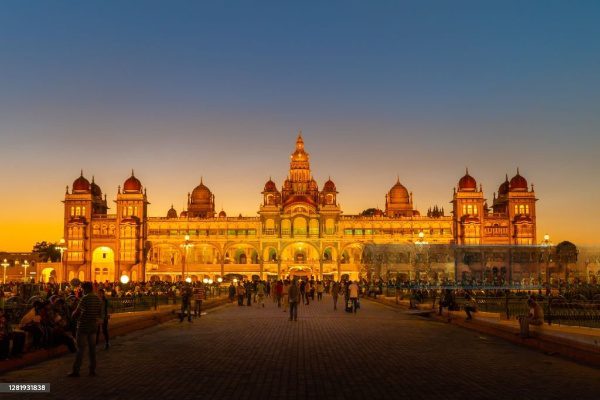
Mysore Palace, also called Amba Vilas Palace, is a beautiful mix of Indo-Saracenic architecture. It was once the home of the Kingdom of Mysore. This palace is a symbol of the state’s rich history. Its stained glass, domes, and big gardens are a beautiful sight.
Tip: Visit during the Dussehra festival when the palace is lit up with thousands of lights. It’s a magical sight.
9. Konark Sun Temple, Odisha

The Konark Sun Temple, a UNESCO World Heritage Site, is a 13th-century wonder dedicated to the Sun God. Shaped like a big chariot with beautiful stone carvings, this temple is a masterpiece of Kalinga architecture and a symbol of India’s ancient scientific and spiritual knowledge.
Tip: Visit during the Konark Dance Festival in December for a great experience.
10. Varanasi, Uttar Pradesh
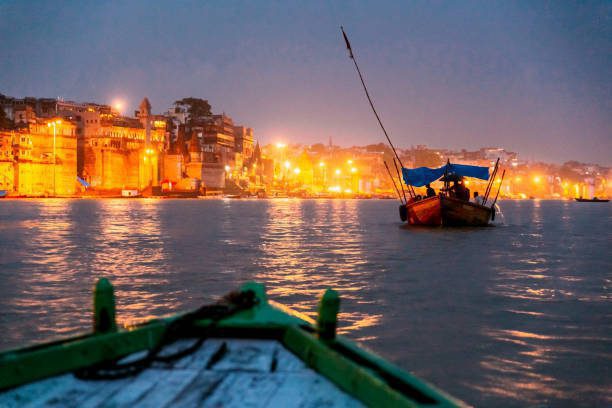
Varanasi is one of the oldest cities in the world. It is a spiritual and cultural center of India. The city, with its ghats (steps leading down to the river), temples, and lively energy, has seen the rise and fall of empires. This makes it a historical treasure. The city’s old streets and the Ganges River are full of stories waiting to be discovered.
Tip: Take a boat ride on the Ganges early in the morning to see the ghats come alive with rituals and prayers.
Final Thoughts, historical sites in India
History buffs, prepare to be transported! Traveling to India with Xplro.com is like stepping into a time machine. Explore the grandeur of forts and palaces, the serenity of temples, and the lively energy of ancient cities. Each stop on this curated list unveils a unique layer of India’s rich past, ensuring your journey through time is both fascinating and unforgettable. Visit Xplro.com to start planning your historical adventure today!
FAQs
1. What is the best time to visit historical sites in India?
- The ideal time to explore historical sites in India is during the cooler months, typically from October to March. The pleasant weather during this period makes it more comfortable to visit outdoor attractions. Summers, particularly in northern India, can be extremely hot, while monsoon rains can affect travel plans.
2. Is it safe to travel alone to historical sites in India?
- Yes, it is generally safe to visit historical sites in India as a solo traveler. However, it’s always wise to take precautions like sticking to well-known tourist routes, avoiding isolated areas after dark, and staying informed about local customs. Hiring local guides at historical sites can also enhance both safety and your overall experience.
3. Do I need any special permits to visit historical sites in India?
- Most historical sites in India do not require special permits. However, some remote or restricted areas, particularly those close to international borders or protected regions (e.g., Ladakh), may need permits. Always check local regulations for specific destinations before your trip.
4. How much time should I allocate to explore each site?
The amount of time needed to explore historical sites in India can vary greatly:
- Taj Mahal: 2-3 hours
- Hampi: 1-2 days
- Red Fort: 2-3 hours
- Ellora & Ajanta Caves: 1-2 days
- Jaisalmer Fort: 1 full day For larger sites like Hampi or Ajanta, a longer stay is recommended to fully appreciate the historical significance and architecture.
5. Do historical sites in India charge entrance fees?
Yes, most historical sites in India charge an entrance fee. These fees usually differ for Indian and foreign visitors. For example:
- Taj Mahal: ₹50 for Indian citizens, ₹1100 for foreign visitors
- Hampi: ₹40 for Indian citizens, ₹600 for foreign tourists It’s advisable to carry cash, as card payments may not be accepted everywhere.
6. What is the best mode of transportation to visit historical sites in India?
- Traveling between historical sites in India is convenient with various transportation options. Domestic flights are ideal for long distances, while trains offer a scenic way to travel medium distances. For more flexibility, hiring private cabs is a great choice, and ride-sharing apps like Ola and Uber are widely available in urban areas.
7. Do I need a guide to visit historical sites in India?
- Hiring a guide is not mandatory, but it can greatly enhance your experience. Many historical sites in India, such as Hampi and Fatehpur Sikri, are rich in history, and having a knowledgeable guide can help you understand the site’s cultural and historical significance. Most major sites offer licensed local guides for hire.
8. What should I wear when visiting historical sites in India?
- When visiting historical sites in India, it’s important to wear comfortable clothing and good walking shoes. If you’re visiting religious sites or temples, dressing modestly is recommended—cover your shoulders and knees as a sign of respect. Lightweight, breathable fabrics are ideal for the Indian climate.
9. Is photography allowed at historical sites in India?
- Photography is allowed at most historical sites in India, though some places may have restrictions. For example, inside the Taj Mahal’s mausoleum, photography is prohibited. Flash photography may also be banned in certain areas to protect ancient artwork. Always check the rules at each site before taking photos.
10. Are there restrooms and dining facilities at historical sites in India?
- Most of the prominent historical sites in India have basic amenities such as restrooms, food stalls, and nearby restaurants. However, the quality and availability of these facilities may vary, especially at remote sites like Hampi. It’s always a good idea to carry water, snacks, and hand sanitizer, particularly at more rural locations.
11. Are historical sites in India accessible for people with disabilities?
- Accessibility at historical sites in India varies. Modern tourist sites like the Taj Mahal have ramps and are wheelchair-friendly, but older sites such as Hampi or Jaisalmer Fort may be challenging due to uneven terrain and steep stairs. It’s recommended to research the accessibility of each site before your visit.



